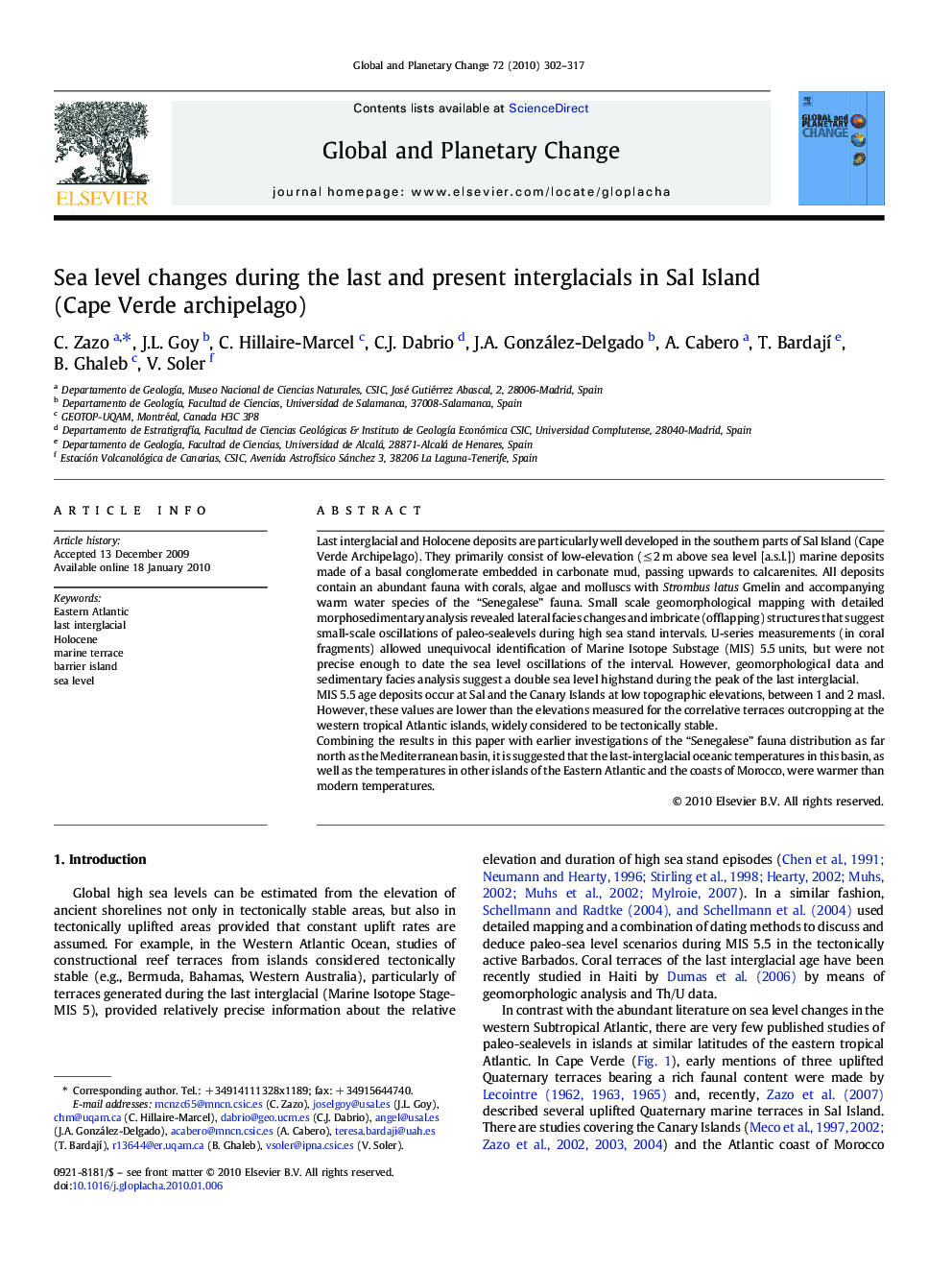| کد مقاله | کد نشریه | سال انتشار | مقاله انگلیسی | نسخه تمام متن |
|---|---|---|---|---|
| 4463918 | 1313691 | 2010 | 16 صفحه PDF | دانلود رایگان |

Last interglacial and Holocene deposits are particularly well developed in the southern parts of Sal Island (Cape Verde Archipelago). They primarily consist of low-elevation (≤ 2 m above sea level [a.s.l.]) marine deposits made of a basal conglomerate embedded in carbonate mud, passing upwards to calcarenites. All deposits contain an abundant fauna with corals, algae and molluscs with Strombus latus Gmelin and accompanying warm water species of the “Senegalese” fauna. Small scale geomorphological mapping with detailed morphosedimentary analysis revealed lateral facies changes and imbricate (offlapping) structures that suggest small-scale oscillations of paleo-sealevels during high sea stand intervals. U-series measurements (in coral fragments) allowed unequivocal identification of Marine Isotope Substage (MIS) 5.5 units, but were not precise enough to date the sea level oscillations of the interval. However, geomorphological data and sedimentary facies analysis suggest a double sea level highstand during the peak of the last interglacial.MIS 5.5 age deposits occur at Sal and the Canary Islands at low topographic elevations, between 1 and 2 masl. However, these values are lower than the elevations measured for the correlative terraces outcropping at the western tropical Atlantic islands, widely considered to be tectonically stable.Combining the results in this paper with earlier investigations of the “Senegalese” fauna distribution as far north as the Mediterranean basin, it is suggested that the last-interglacial oceanic temperatures in this basin, as well as the temperatures in other islands of the Eastern Atlantic and the coasts of Morocco, were warmer than modern temperatures.
Journal: Global and Planetary Change - Volume 72, Issue 4, July 2010, Pages 302–317